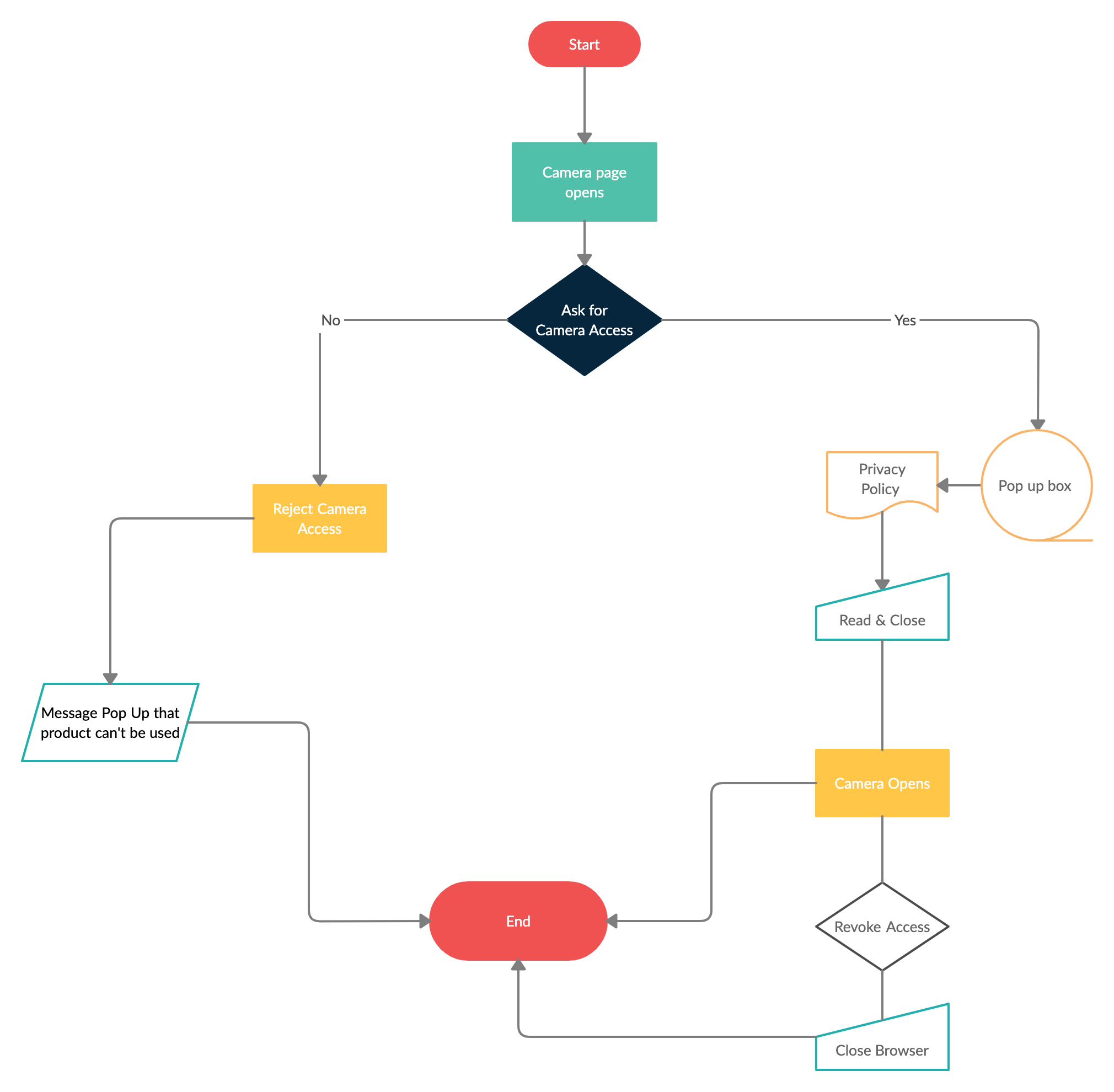Project #8 Consentful Interface
Experimental Camera 2.0
Open Camra, Accept or Reject Policy, Move your face position infront of the camera
APPLYING A COMPREHENSIVE FRAMEWORK FOR CONSENT TO CAMERA USE THROUGH REVERSIBILITY, CLEAR LANGUAGE, AND RESPECT FOR A USER’S DECISION NOT TO CONSENT
Design Process
Flow Chart

The prototype we’re working on involves
a) mapping out a user flow that fully considers consent, refusal, as well as the reversal of consent;
b) a set of two buttons, one for signing onto the principles and one for removing yourself either as a public signatory or entirely from the signatory list;
c) a clear language policy that asks for consent while also reminding users about what good consent looks like;
d) the visual design and copywriting of a dialog box that indicates that we respect a user’s decision to refuse consent.*
Platform Privacy Policy
You have the full right to your data
No commodification
I do not want your data
I will not sell you data
I will not be tracking any data while you use the camera
I will not be collecting any data while you use the camera
This camera doesn't need any login information
You can input your data at your own level of comfort for updates & product information from me
I will only count the number of times the camera has been used
Inform the user of the accuracy of the CLM tracker
State that the camera only tracks the face
--Reflection
While developing the consent protocol, I wanted to emphasize making the terms very easy and clear for any user to be able to agree to or reject. The user is also able to revoke their agreement at any point in the process, which was also very important that it was not a final decision, and that the user could rethink their consent. While designing an unconventional camera, I thought a lot about the ways in which we can capture ourselves: enhance, hide, and distort our reality. While cameras used to capture the truth, they are now a tool used to control reality. Glissant says in his assertion on Opactiy: "This same opacity is also the force that drives every community: the thing that would bring us together forever anel make us permanently distinctive. Widespread consent to specifie opacities is the most straightforward equivalent of nonbarbarism. We clamor for the right to opacity for everyone. The process of learning about incorporating a consentful practice to my camera got me to reflect on all the ‘terms of service’ that I agreed to without fully reading the terms, and all the things that I interact with online without consent. It seems that the internet space was built with consent as an afterthought. The digital world is a consistent mining of information that sometimes feel like we have very little authority and agency over. But learning about consent in the digital and internet space also brought up issues that relate to the physical space. That how we build and nurture digital spaces should be guided by similar principles of safety as we do physical spaces. In a world increasingly moving into the digital sphere, consent should be at the center of how software and interfaces are created.